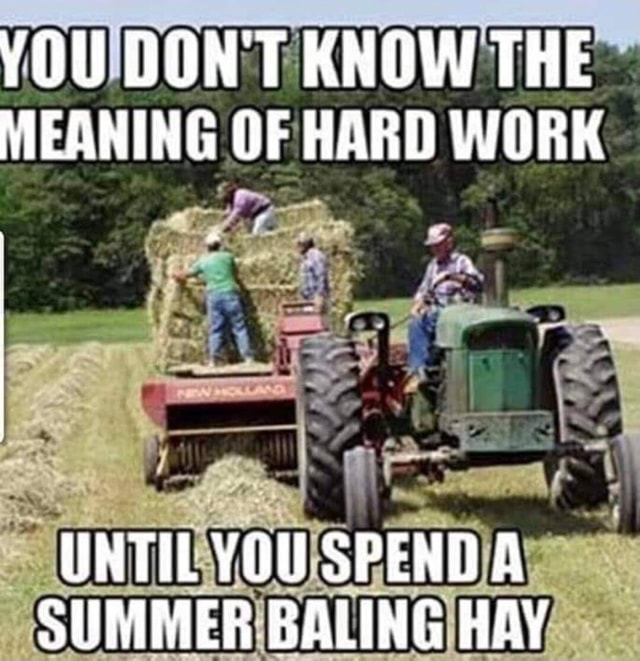Back Home by Chris Hardie
- Download this column as a Word document
- Download the photos that accompany this story
- Chris Hardie’s headshot

There’s a social media post that’s been circulating for a few years that shows a farmer driving a tractor baling hay with three people stacking bales on the wagon with the words: “You don’t know the meaning of hard work until you spend a summer baling hay.”
That’s one post that will find no argument with me and many others who grew up stacking bales in the summer. I heard from a few of those in response to a column I wrote about those hard working days of old.
On the flip side, our family used to laugh at a 1977 television commercial for Miller High Life beer that featured hay baling – sort of. The commercial shows some hay raking and a farmer wearing bib overalls pulling a wagon through a field, where two younger men – presumably his sons – toss a few bales on the rack.
The voice over says: “Your family farmed this land with pride for six generations. The work never ends, but you do it with pride and all the strength you can muster. And when the sun finally takes a rest, so do you.”
With a shot that shows the two sons spread out over a few bales on the wagon, the fathers says “OK boys, let’s go home,” and they are treated to Miller High Life by their mother.
What we found humorous was that they called it quits after stacking what looked like 75 bales at the most. And how did they make it six generations if they hadn’t yet discovered that you can pull the wagon behind the baler and stack them so you don’t have to pick them up in the field?
One can argue that there is more than one beer that stands clear when it’s time to relax, but we thought the commercial was a joke when we would put up more than 1,000 bales in a day.
But those efforts paled in comparison to the efforts of a farmer in Pennsylvania who responded to my column. The farmer – who asked to remain anonymous – said his mother kept a diary and in one entry she wrote: “We made 2,434 bales of hay today. I think that’s a record for us.”
The farmer said they had dairy and beef cows in the 1960s, 70s and 80s and also did custom baling for the horse hay market in suburban Philadelphia, putting up 50,000 square bales of first cutting alone. Help included two of his hard-working friends and a more transient workforce.
“My dad would hire ‘tough’ town boys … four or five would show up on the first day. One usually stuck it out and it was always the skinny little kid – not the football players,” the farmer said.
“Now those times are all gone (replaced with) round bales, large squares and chopping everything for silage. But non-farmers have no clue what real farmers do (and) deal with.They would never do what we do.”
Brian Hanscom of Abbot, Maine said he read my column “after recovering from making hay two days ago in the 90-degree heat here in Maine. Yes, it would be cheaper to buy hay from a local farmer but I’m the crazy one who owns 12 or 15 acres and just has to do it myself like my grandfather would.”
Hanscom quipped that he’d have to sell the bales for “$450 each” to recover the cost of his investment in haying equipment.
Gwen Groenewold from Bloomington, IL said my story brought back memories even though her family didn’t bale hay. “We chopped and blew it into the mow on one side of the barn and the other side was for straw for bedding,” she said. “It was hot and dusty but chopped hay was not as labor intensive as baled hay.”
Groenewold said her father’s farm was 40 acres in Sheboygan County – not enough to be sustainable but would have made a good hobby farm today. The barn burned down, but the silos still stand.
“I have many, many memories of growing up on ‘The Forty’ and I hope to write some down for kids and grandkids.”
Seems like haying stories bind many of us together.
Chris Hardie spent more than 30 years as a reporter, editor


